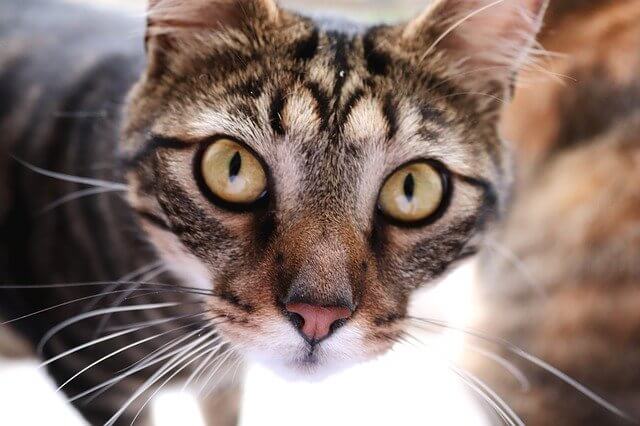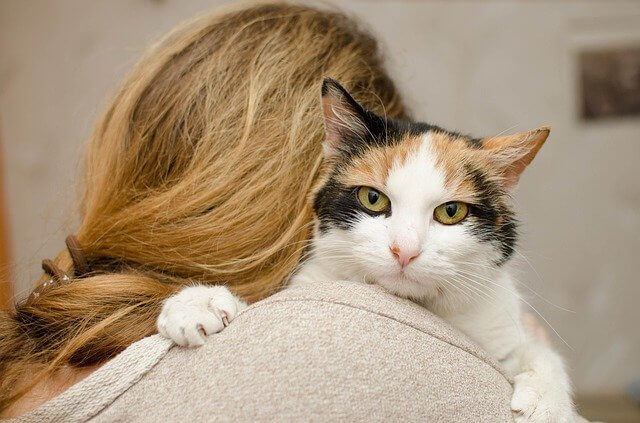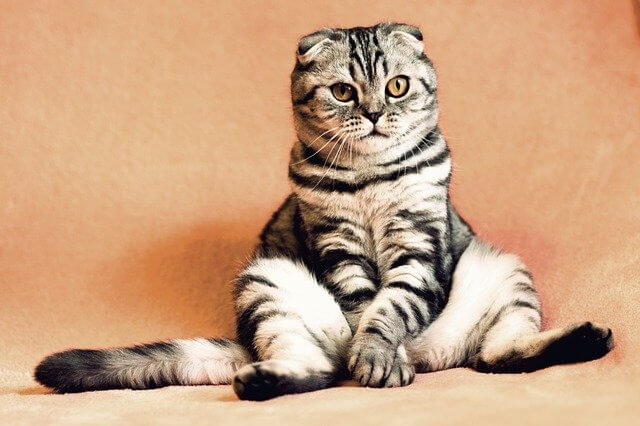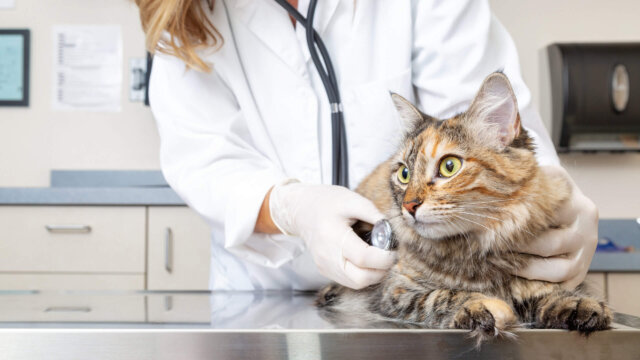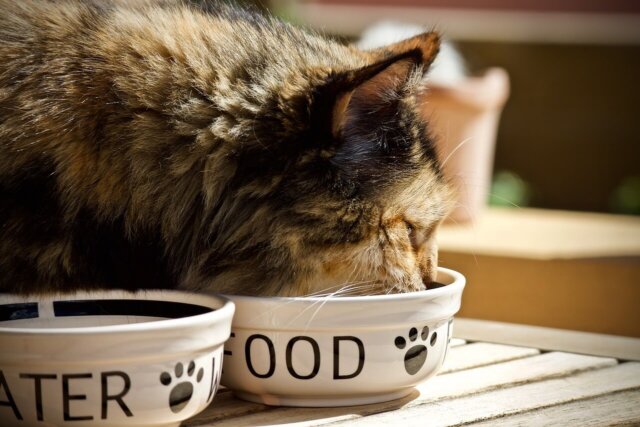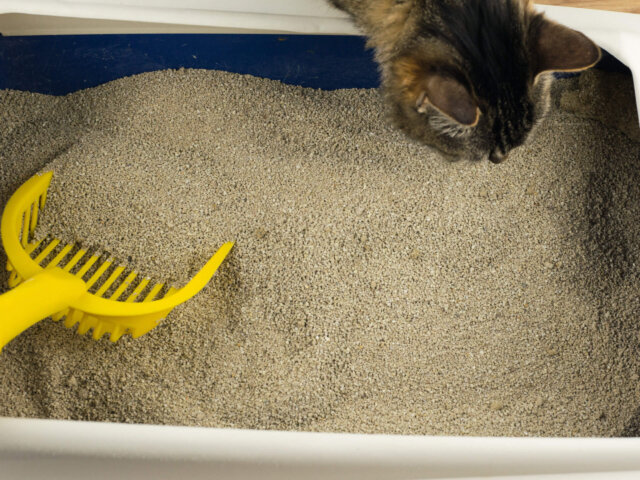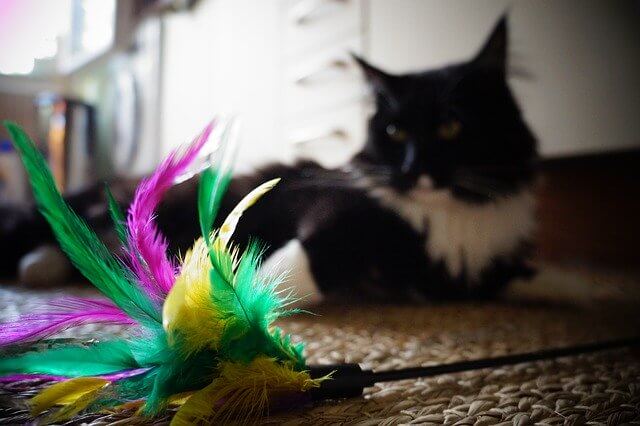Feline urinary tract health problems can sneak up on a household in a hurry. Most cat parents won’t even know there’s a urination problem until their cat is peeing outside the litter box. But by keeping to a routine of litter pan freshness and water monitoring, you can keep your cat’s urinary tract healthy and free-flowing.
But even when we tend to feline needs with the utmost care, sometimes our kitties get sick. When we notice odd symptoms arising in our cats, it’s up to cat parents to provide the care kitty needs. By calling the vet and arming yourself with knowledge, you can help your cat through whatever sickness falls. And when it comes to the urinary system in cats, there is much to know.
For example, did you know feline urinary systems are divided into two portions?
The upper portion consists of the kidneys and the ureters. The lower urinary tract is comprised of the bladder and the urethra. Both portions are susceptible to illness and infection, and one can often lead to problems in the other.
While the field of feline urinary tract diseases and conditions is wide, the problems mentioned here tend to be the more common ailments when comes to cats and urinary tract health.
Common Urinary Tract Problems in Cats
Upper Urinary Tract Issues
As the upper urinary tract deals with kidney health, the problems that occur range from congenital issues and disease to infection. Chronic kidney diseases can change the chemical makeup of the urine produced, which in turn can lead to problems with the lower urinary tract as well as eventual renal failure.
Kidneys can experience a wide range of disorders which can be narrowed into such categories as:
- Chronic kidney diseases, which can lead to failure when not monitored
- Acute kidney failure, meaning a severe problem that arises quickly
- Cancer
Dr. Ernest Ward reports, “Chronic renal failure (CRF), or chronic kidney disease (CKD) is mainly a problem in older cats. Only about 10% of the cases occur in cats less than three years old.”
Symptoms of illnesses involving the kidneys are increased thirst, frequent urination in high volumes, weight loss, lack of appetite, vomiting, and dull fur.
Feline Lower Urinary Tract Disease
The Cornell Feline Health Center reports feline lower urinary tract problems, abbreviated as FLUTD, are “the number one reason cats visit veterinary practices.” Conditions that fall into the FLUTD realm are urinary tract infections, Feline Idiopathic Cystitis, urinary crystals or stones, and urinary tract blockages.
Symptoms of urinary tract problems in cats include:
- Difficult urination, this may appear like constipation straining while actually trying to pass urine
- Frequent urination which might produce only small amounts
- Crying during visits to litter box
- Urinating blood
- Urinating outside litter pan, either near it or going on inappropriate spots like rugs or clothing
- Overgrooming or constant licking of the genital and lower abdominal region
If your kitty displays any of these symptoms, schedule an appointment with the vet to examine your cat’s urinary tract heath.
Urinary Tract Infection in Cats
Surprisingly, bacterial urinary tract infections in cats aren’t common. Dr. Arnon Gal explains, “Generally speaking, infectious agents such as bacteria are infrequent in urinary tract disease in cats.”
Symptoms of UTI in cats follow those of other urinary tract issues, but another symptom to be on the lookout for includes strong smelling urine. If you see your cat suffering with the symptoms of urinary tract disease, make an appointment with the vet to find the cause. While a bacterial infection of the urinary tract, including the bladder, is likely not the cause of pain or symptoms, its important to rule it out.
Feline Idiopathic Cystitis
Accounting for two-thirds of FLUTD, feline idiopathic cystitis, or FIC, is a painful inflammation of the bladder without an “obvious underlying cause”, but there are some factors that do appear in most cats suffering from FIC, or Feline Urologic Syndrome as its also known:
- Bladder lining abnormalities
- Inflammation of the bladder nerves
- Stress; environmental factors and multi-cat dynamics are often one issue behind FIC
- Anxiety
If you have clumping cat litter, monitor the number and size of urine clumps. Lots of smaller clumps indicate frequent use with little result. This can indicate FIC or another of the lower urinary tract problems in cats. Also keep in mind, cystitis in cats can be recurrent. Remain on the lookout for symptoms if your cat has already suffered one bout.
Urinary Crystals
Calcium Oxalate and Struvite crystals make a kitty’s urine sparkly in the sunlight, but this glitter is anything but good in your cat’s urinary tract system. Crystals and urinary stones form thanks to dietary and metabolic issues and can also be see in feline UTIs. Generally speaking, urinary crystals form when a cat is not receiving the necessary moisture needed to dilute urine and the minerals within it.
Cat bodies are conditioned to take most of their needed moisture from the prey they catch and eat. But our domesticated cats have grown accustomed to their household diets and take much moisture from canned cat food. Felines on an all dry cat food diet are at higher risk for crystal development thanks to lower moisture content of dry kibble.
For aid in the prevention of urinary stones and crystals in cats, Dr. Gregory F. Grauer, DVM, MS, Diplomate ACVIM, explains, “Canned diets are usually recommended over dry diets because of their high water content.”
Urinary crystals can be dissolved with diet modification and good hydration practices.
Urinary Blockages
Like humans, cats can experience blockages of the urethra, which can lead to an excruciating inability to urinate. And often, male cats are more susceptible to such obstruction thanks to their longer, narrower urethra.
The American College of Veterinary Surgeons states, “Obstructions are often the result of plugs of inflammatory material, mucus, crystals, small stones (called calculi) that have formed in the kidneys and have passed down into the bladder.” These blockages can also result from injury or scarring from previous trauma to the area.
A very painful problem, your cat’s behavior will indicate blockages with inappropriate elimination, frequent tries to go with no result, blood in the urine, and mournful crying. Urinary blockages can be life threatening and “complete obstruction can cause death of the cat in 3–6 days.”
Do not wait to seek treatment if you suspect your cat has a urinary blockage. Call the vet now!
9 Tips for Feline Urinary Tract Health
For all the things that can seemingly go wrong, there are many ways you can help keep your cat’s urinary tract healthy! Check out these tips:
#1 – Fresh, clean water
Cats can be picky about drinking water. Its up to cat parents to find bowls or fountains that provide the comfort their kitty desires. Keeping water sources at various points around the house can help intake too. Also, with senior cats who don’t like to move around as much, it might be nice to bring a bowl of clean water to them every so often.
Be sure to change out water daily and clean any dirt or film that may accumulate in dish. Also, don’t let kitty run out of water either. Always make sure a fresh sip is always available.
#2 – Small, frequent meals
By offering smaller portions at several intervals throughout the day, you can help your cat maintain hydration throughout the day rather than at just mealtimes.
#3 – Maintain litter box freshness
Cats will avoid dirty litter pans, which can lead to peeing outside the litter pan as well as feline urinary tract health problems. Scoop 1-2 times daily, at least. Replace old litter with clean, fresh litter monthly.
Related: The 11 Best Cat Litter Boxes for the Purrfect Potty Experience
#4 – Litter pans for every cat
The golden rule with cats and litter pans is one pan per cat plus an extra if possible. Having a pan for every kitty can make the cat parent’s life a little easier as tension between cats can be tamed by offering everybody their own elimination space. Territorial stress can play a big role in urinary tract issues.
#5 – Quiet potty space
Litter boxes should be placed in quiet areas with minimal traffic. Think about it this way, you like to do your business behind closed doors. Cats like their private space for elimination and a noisy area could bring on stressors that give rise to urinary problems in cats.
#6 – Minimize stress
Cats like routine. Anything disruptive to what they know can send them into a tizzy. And one of the fastest ways a cat can display displeasure is by urinating outside the litter pan, either by the box or somewhere else in the house. So, keep home a peaceful place where a kitty knows just what to expect.
#7 – Maintain a healthy diet
One of the best ways to keep up your cat’s urinary tract health is to maintain a lifelong healthy diet that includes wet food. If your cat insists on a dry food only diet, research cat foods good for urinary tract health.
#8 – Mental stimulation and play
Exercise and metal stimulation are key to keeping cats healthy as they age. By providing your cat with toys and activities, you keep kitty feeling kittenish all the way into the senior years.
#9 – Regular veterinary care
Regular checkups with the vet are a must. With routine care and examinations, issues that can dampen the quality of a cat’s life can be found early, saving your kitty from any unnecessary suffering or illness.
As cat lovers, we already keep a close eye on pretty much everything our cats do and by maintaining this vigilance, cat parents can keep felines healthy all the way through!

